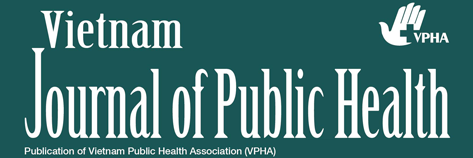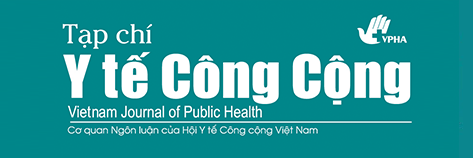Phương pháp vo gạo, nấu cơm truyền thống làm mất một lượng rất lớn sắt, kẽm trong cơm (The traditional rice washing and cooking methods cause lost levels of zinc & iron in cooked rice)
Tóm tắt
Ảnh hưởng của các phương pháp vo gạo, dụng cụ nấu cơm khác nhau đến tỷ lệ hao hụt sắt (Fe) và Kẽm (Zn) trong gạo (OM 4926) và cơm đã được nghiên cứu trên 10 gia đình, thuộc 6 dân tộc khác nhau (Sán chí, Sán dìu, Nùng, Tày, Hoa, Kinh), với 5 loại xoong nồi khác nhau (Gang đúc, nhôm Hải Phòng, nồi đồng, nồi đất, nồi cơm điện). Hàm lượng Fe, ZN trong gạo và cơm được xác định bằng phương pháp quang phổ hấp phụ nguyên tử.
Kết quả cho thấy lượng Zn trong gạo sống sạch (trung bình± SD) là 12,88± 0,01 mg/kg, Fe là 6,98± 0,04 mg/kg. Hàm lượng Zn trong cơm là 5,426± 0,746 mg/kg, Fe là 0,426± 0,291 mg/kg. Lượng Fe, Zn mất đi (trung bình± SD) trong quá trình vo gạo, nấu cơm dao động từ 79,9-96,5% (86,2± 6,7%) với Fe và 4,6%- 21,8% (13,7± 6,4) với Zn.
Truyền thông cho người dân hiểu và thực hiện một số quy trình giảm thiểu mất mát các vitamin và chất khoáng: Không xay sát trắng quá, không nên chà sát mạnh tay khi vo gạo là cần thiết. Lượng mất vitamin và chất khoáng trong quá trình chế biến cũng cần quan tâm khi tính toán khẩu phần dinh dưỡng thực tế của người dân.
English abstract
Effects of rice washing and cooking methods on lost levels of zinc & iron in cooked rice (OM 4926) have been investigated in 10 families, belonging to 6 ethnics (San chi, San diu, Nung, Tay, Hoa, Kinh), using 5 kinds of cooking pans/pots (cast iron, aluminum pan (Hai Phong), soil pot, copper pot, electric cooker). Levels of zinc and iron in raw rice and cooked rice were analysed by using Atomic Absorption Spectrophotometric (AAS) method.
Results indicate that the zinc levels in raw rice (mean±SD) are 12.88 ± 0.01mg/kg, and iron levels 6.98± 0.04 mg/kg. The lost percentage of iron due to washing and cooking ranges from 79.9 - 96.5% (mean±SD: 86,2± 6,7%) and ranges from 4.6% - 21.8% (mean±SD: 13,7± 6,4%) for zinc.
Thus, educating people about the knowledge and good processes on washing rice in order to minimize the loss of zinc, iron and vitamins from rice is necessary. Much rice milling and polishing or rubbing time and again rice when washing it should be avoided. The high percentage of zinc and iron lost during washing and cooking rice should be considered when interpreted the results of food consumption from population.
Từ khóa
Toàn văn:
PDF (English)##submission.citations##
Dung LH, Ninh NX, Hoa TTC, Glahn RP, Khan NC (2007). Iron availability of Vietnamese rice and meal: studies using an in vitro digestion/caco-2 culture model.
Proceeding of the Harvest plus rice crop team biofortification meeting; 3-5 November 2007, Rose garden river Hotel, Nakorn Pathom, Thailand.
Hoa TTC, Nghia PT, Huong LTY, Hai TV (2007). Introgression of golden rice to Vietnamese rice varieties. Proceeding of the Harvest plus rice crop team biofortification meeting; 3-5 November 2007, Rose garden river Hotel, Nakorn Pathom, Thailand.
Nghia PT, Tu PN, Hoa TTC (2007). Breeding for irondence rice in Vietnam. Proceeding of the Harvest plus rice crop team biofortification meeting; 3-5 November 2007, Rose garden river Hotel, Nakorn Pathom, Thailand.
Nguyễn Xuân Ninh, Trần Thị Cúc Hòa, Nguyễn Công Khẩn (2004). Đặc tính cảm quan gạo-cơm của một số giống lúa giàu sắt kẽm ở Việt Nam. Tạp chí Y học dự phòng; Tập XIV, số 1(65): 94-100.
Nguyễn Công Khẩn, Nguyễn Xuân Ninh (2007). Tình hình thiếu vitamin A, thiếu máu ở trẻ em dưới 5 tuổi tại 6 tỉnh đại diện Việt Nam, năm 2006. Tạp chí Y tế công cộng 8(8): 17-21.
Black RE, Allen LH, Bhutta ZA, et al. 2008. Maternal and chil undernutrition: global and regional exposure and health consequences. The Lancet Serie (January): 5-21.
Geerlings PD, Brabin BJ, Omari AAA (2003). Food prepared in iron cooking pots as an intervention for reducing iron deficiency anemia in developing countries: a systematic review. Journal of Human Nutrition Dietetic 16: 275- 281.
Kongkachuichai R, Sirichakwal P, Charoensiri R, et al (2007). Nutrition analysis of selected iron-zinc dense rice and bioavailabity and the efficacy trail with a prototype rice variety, Sin-lek. Proceeding of the Harvest plus rice crop team biofortification meeting; 3-5 November 2007, Rose garden river Hotel, Nakorn Pathom, Thailand.
NIN/MOH (2003). General nutrition survey 2000. Eds. HH Khoi, NC Khan, LB Mai, LD Tuyen. Medical Publishing-Hanoi.
Poletti S, Gruisem W, Sautter C (2004). The nutritional fortification of cereals. Current opinion in biotechnology 15: 162-165.
Susanto U, Inabangan A, Grewal D et al (2007). Advances in breeding for biofortification rice at IRRI. Proceeding of the Harvest plus rice crop team biofortification meeting; 3-5 November 2007, Rose garden river Hotel, Nakorn Pathom, Thailand.
Victoria CG, Adair L, Fall C, et al(2008). Maternal and chil undernutrition: consequences for adult helth and human capital. The Lancet Serie (January): 23-40.



